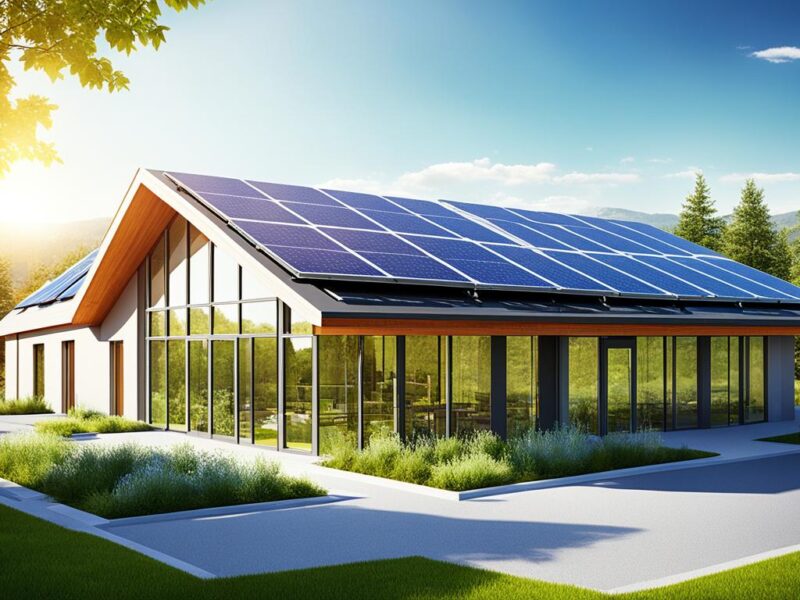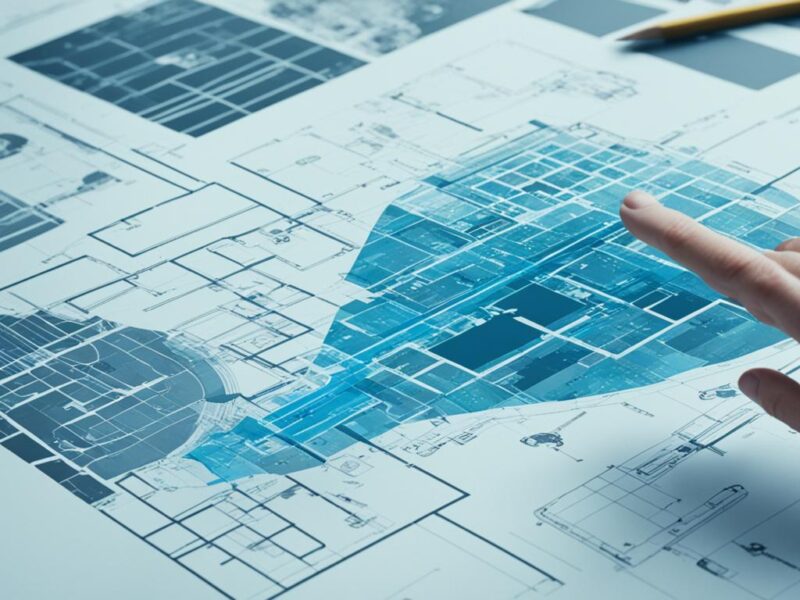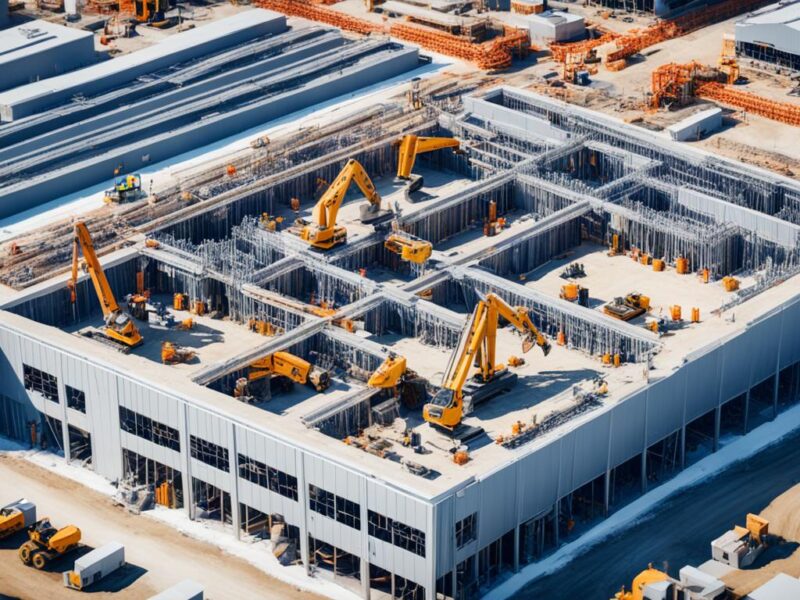
The Ethical Dilemmas of 4D Scanning in Construction: From Blueprint to Big Brother:
Imagine a world where buildings are not just inert structures, but living entities that are constantly monitored and kept alive by a watchful eye at all times. The concept of 4D scanning is not science fiction; it is already a reality. As a result of this technology, we will be able to transform the way we build and manage our environment in the future. As with great power, there is also responsibility, and 4D scanning raises ethical dilemmas that need to be considered carefully.
What is 4D scanning?
An image of a building being scanned by a laser scanner with data points projected around it. 4D scanning, also known as dynamic capture or real-time 3D scanning, extends beyond static 3D models. As well as capturing spatial dimensions of a structure, it also records its temporal changes over time as it develops. Think of it as a time-lapse video of a building that records its movements, deformations, and interactions with its environment always. We can use this data for a wide range of purposes. These purposes range from structural health monitoring and preventative maintenance, to optimizing energy efficiency and even predicting environmental impacts based on this data.
Video of an example of 4d scanning
The potential benefits are:
4D scanning has vast benefits. Imagine buildings that can:
- Alert engineers to potential structural issues before they become major problems, preventing disasters and saving lives.
- Optimize energy usage by adjusting heating, cooling, and ventilation systems in real-time based on occupancy and environmental factors.
- Provide valuable data for improving design and construction methods, leading to more efficient and sustainable buildings.
- Create immersive virtual experiences of buildings for architects, engineers, and the public.
The ethical dilemma:
However, alongside these benefits lies a web of ethical concerns:
- Data Leak: Building monitoring raises serious privacy concerns that need to be addressed. Who has the ownership of 4D scanner data? What is the purpose of using it? Who has access to it? These questions need clear answers to ensure that sensitive and personal information is not misused.
- Mass surveillance: There is also the possibility that 4D scanning can be used for mass surveillance purposes. This is another major concern that needs to be addressed. It is easy to imagine that buildings could not only monitor their own health, but also track people’s movements and activities. As a result, there is a chilling possibility of Orwellian-style control and privacy erosion.
- Algorithmic Bias: Just as with any other data analysis technology, 4D scanning can be subject to algorithmic bias. As a result, the results will also be biased if the data used to train the algorithms is biased. As a result, this could lead to discriminatory practices, such as the denial of insurance or maintenance to buildings based on their demographics.
- Hacking:4D scanners are a tempting target for hackers due to the vast amount of data they collect. Cyberattacks can compromise building systems or even harm critical infrastructure. To protect against these risks, robust cybersecurity measures are needed.
- As far as social implications are concerned, 4D scanning could have a significant social impact. What will happen to human inspectors and maintenance workers’ jobs in the future? Do you think 4D scanning will impact our interaction and relationship with our built environment? There is no doubt that these questions require careful consideration and proactive planning to be answered.
Navigating the ethical landscape:
To fully realize 4D scanning’s potential while mitigating its risks, we need a robust ethical framework. This framework should include:
- Clear and transparent data ownership and usage policies.
- Strong privacy protections for individuals within scanned buildings.
- Independent oversight and accountability mechanisms to prevent misuse.
- Investment in education and awareness to ensure the public understands the technology and its potential implications.
- Ethical guidelines for 4D scanning systems development and deployment.
Drones in construction?
There is a revolution happening in the construction industry with drones. The construction industry can leapfrog other industries with drones and technology like A.I. and advanced robotics.
Facade monitoring
Building regulations are constantly changing, and drones can play a vital role in documenting all construction steps.

Enter 4D Drone Mapping
Drones can create 3D models of the job site and tie them together in a 4D timeline. This allows you to understand the “change” in stockpile volumes and cross-verify measurement figures obtained from contracted surveyors.
4D Reporting
4D modelling and reporting can automatically create PDF reports showing how stockpile measurements change over time. With this information in hand, it is easy to communicate with your team. You can create reports with 2D graphs and 3D timelines.
A.I.
AI will help the drone industry by consuming all the data made available to it. It will flag problem areas and make predictions on what actions need to be taken to resolve the issue.
During the construction phase of a project, engineers, construction managers, and contractors leverage 4D construction models to drive significant value. Here are some examples.
- Scheduling and simulation-based models. Planners and construction staff can visualize construction sequencing, including staging (for example, cranes, material storage, and site access). Using the 4D model, errors in the plan can be identified and the construction path optimized. In addition, it is a better way for everyone on the construction team to understand the plan. Building in virtual reality is better than making mistakes on the ground.
- Model-based QTO and estimation. An approach in which means, methods, quantity calculations, and cost codes are linked to model objects. This allows for more accurate estimates, faster iteration if designs change, and cost optimization of project plans. Tenders can be more accurate when organizations have this information.
- Field inspection and progress tracking using AR/VR and models. Georeferenced construction models can be brought into the field through web and mobile apps to provide data access and capture. By using its model object (virtual representation) as a reference for the task, field staff, for instance, collect data about the correct constructed asset.
Conclusion.
There is no doubt that 4D scanning is a powerful tool that has the potential to revolutionize the built environment soon. Despite this, it is imperative to remember that technology does not inherently have a positive or negative impact; it depends on how we choose to use it. There is a lot of ethical confusion surrounding 4D scanning, and we must recognize and address this ethical dilemma to ensure that this technology is used in the right interests of all, not just a few, to ensure that the technology is applied in the right way.
The ethical dance between power and responsibility requires more than cautious steps from a lone developer. To ensure 4D scanning isn’t a solo act, but a harmonious ensemble that benefits all, we need a full-fledged ethical waltz, where all voices are heard, from architects and engineers to citizens and policymakers. It is only through open dialogue, transparent practices, and an unwavering commitment to fairness that we can unlock the potential of this technology. Let’s build a future where 4D scanning is the cornerstone of a safer, more sustainable, and more just built environment, brick by brick, principle by principle.







